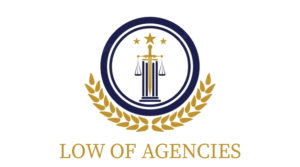The Power of Attorney format emerges as a significant tool that enables people to act on behalf of others in the world of legal transactions. In a variety of situations, this legal tool has the power to exert great influence and leave a lasting impression. Let’s explore the nuances of the Power of Attorney format and comprehend how it enables people to handle challenging circumstances.
Realizing the Essence
The Power of Attorney format is essentially a legal instrument that grants the agent or attorney-in-fact, or chosen person, the power to act on behalf of the principal. This authority is granted by the principal, and the agent is responsible for carrying out the duties specified in the document. Depending on the extent specified in the contract, this arrangement may include a wide variety of monetary, legal, or personal issues.
The Mechanisms of Authority Granting
A power of attorney is drafted using several essential steps. In order to provide such authority, the principal must be of sound mind and able to understand its ramifications. The appointment of the agent may be particular or generic, for a brief timeframe or perpetually until rescinded. The structure provides a thorough explanation of the agent’s authority, ensuring that all parties are informed of their rights and restrictions.
Power of Attorney Types
The Power of Attorney format includes a variety of sorts that address varied needs; it is not a one-size-fits-all notion.
General Power of Attorney:
This comprehensive authority gives the agent broad authority to handle the principal’s financial and legal concerns.
Limited Power of Attorney:
In this case, the agent’s power is restricted to a specified task or period of time.
Unlike a general power of attorney, a durable power of attorney continues to be in force even if the principal becomes incapable.
Medical Power of Attorney:
Also referred to as a healthcare proxy, this document enables the agent to make medical decisions on behalf of the principal in the event that they are unable to do so themselves.
Springing Power of Attorney:
This gives the main flexibility and control by only taking effect in specific situations.
Increasing Decision-Making Power
The power of attorney document is an essential instrument for giving someone power in a variety of situations:
Elderly Care:
When they are unable to manage their financial and medical affairs independently, elderly people might name a trusted someone to take charge of those concerns.
Business Transactions:
A Power of Attorney can help ensure smooth operations in the business world, particularly when handling legal issues or contracts.
Medical Emergencies:
Even in the event that a person is unable to voice their preferences, a medical power of attorney guarantees that they are respected.
Real estate transactions:
A power of attorney can be very helpful in handling the legal elements of a purchase or sale of real estate.
Conclusion
The Power of Attorney format is evidence of how adaptable the legal system is in meeting the many demands of people. It emphasizes how important it is for the principal and agent to have mutual respect and accountability. This legal tool gives people the power to take charge of their lives and safeguard the future, whether it is by assisting them in navigating the intricacies of economics, healthcare, or legal issues. Anyone looking to make educated decisions for themselves or their loved ones must understand the workings of the Power of Attorney structure.

